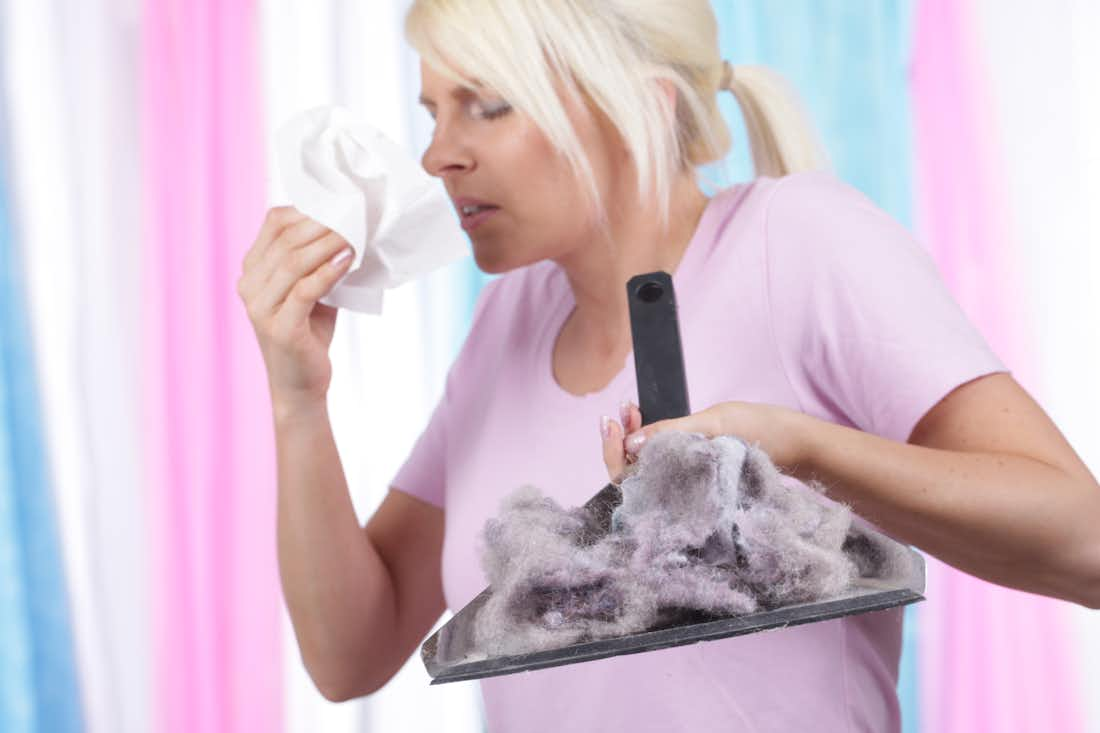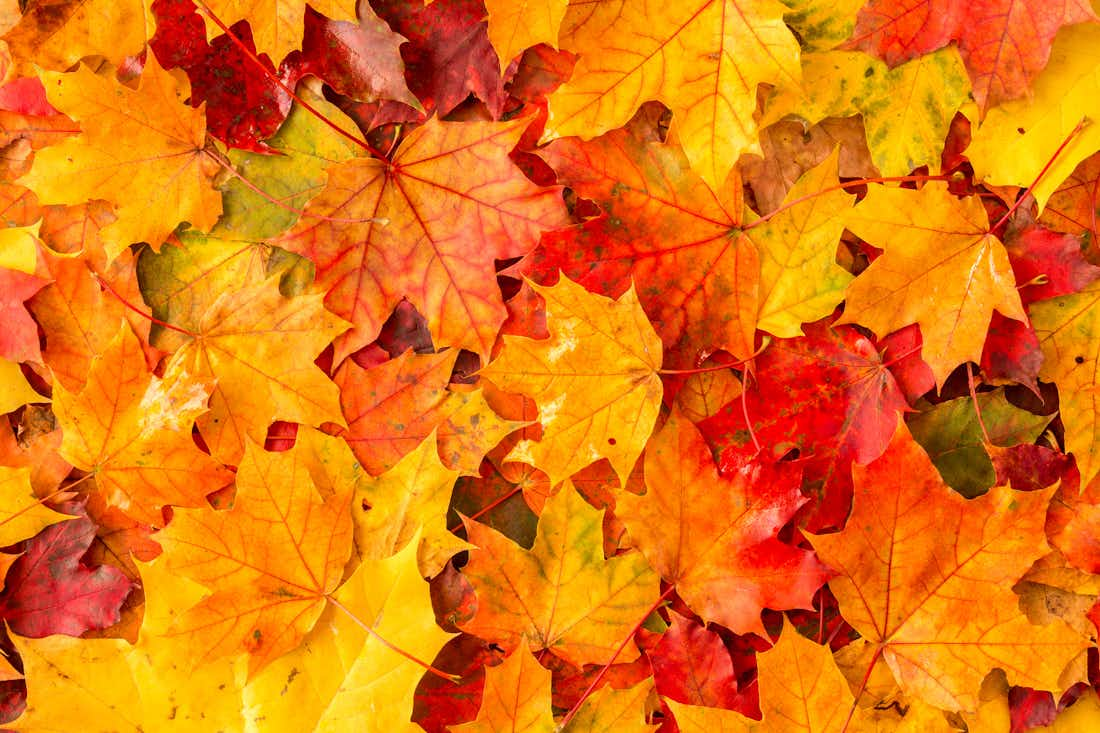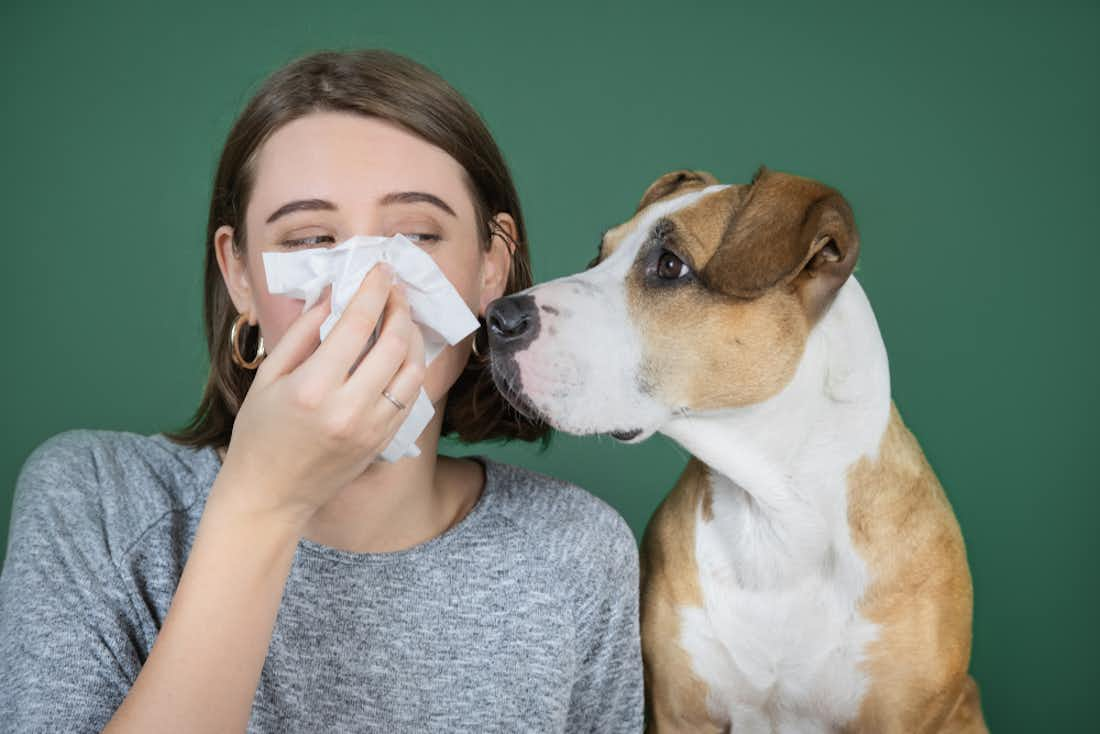Jul 11, 2022
Mold Allergies: What You Need To Watch For
minute read
If you’ve ever sat down to enjoy a piece of bacon, lettuce, and tomato sandwich only to notice some green specks on your wheat bread, you probably felt pretty sick to your stomach. But the mold on your bread or that month-old cheese isn’t the same type that might be causing your stuffy nose and watery eyes.
Mold allergies are a common indoor allergen that can wreak havoc on your immune system, but outdoor molds can cause problems, too. What’s worse is that mold spores are largely invisible, so it can be challenging to pinpoint the source of your coughing and sneezing.
If your reaction to mold is starting to feel a little old, here’s everything you need to know about preventing and treating mold allergies.
What Causes Mold Allergies?
Mold is a type of fungus that exists as a “mold source.” This is where the mold grows and spreads easily. If the source becomes upset due to wind or physical contact, it can release spores into the air which are easily inhaled.
Molds grow everywhere, but only a few different kinds cause allergic reactions. Mold doesn’t pose any real threat to your health. With that said, if you have a mold allergy, your immune system wrongfully perceives it as dangerous and starts to deploy defense mechanisms to get it out of your body.
That’s where the sneezing, coughing, and runny nose come in.
The fungi that you might consume in a delicious stir fry or a bowl of ramen, like shiitake mushrooms or dried fruit, typically don’t cause an allergic response for people with mold allergies. Instead, these are considered food allergies and are approached in different ways.
As for the mold breeds that are allergy-causing, you’ll likely find them growing on logs, rotting leaves, or other outdoor surfaces. Indoors, mold is most common in bathrooms or basements. Essentially, fungi thrive in locations that are damp, warm, and dark.
Mold Allergy Symptoms
Mold allergies present themselves in similar ways as hay fever or seasonal allergic rhinitis. Mold exposure or inhaling airborne mold spores may trigger the following hay fever-type symptoms:
- Runny or stuffy nose
- Itchy eyes
- Watery eyes
- Coughing
- Itchy throat
- Sneezing
- Difficulty breathing or shortness of breath (asthma)
- Dry skin
In rare cases, mold allergies can cause a more severe reaction called allergic bronchopulmonary aspergillosis. Some warning signs of this serious reaction include coughing with brownish, bloody mucous, or severe wheezing. It’s most common in people with pre-existing asthma or cystic fibrosis.
How To Avoid Mold Allergies
Mold allergies can make you miserable, but if you know what to be on the lookout for, you can help to reduce your symptoms and live a clearer life. Here are some tips:
Avoiding Mold Indoors
Ever notice how algae and mushrooms tend to grow in places like caves or thickly covered forests? That’s because fungi thrive off of three main things: moisture, heat, and darkness. Areas that are humid and lack sunlight are breeding grounds for mold.
This makes places like your bathroom tiles, grout, shower, rain gutters, laundry room, and basement particularly susceptible to spore spread.
A great way to help combat indoor mold growth is by lowering the humidity inside. If your indoor humidity is above 50 percent, meaning that the air is at half of its total moisture capacity, you’ll likely start to see some mold problems. The goal is to keep it between 35 percent and 45 percent humidity to stay comfortable while reducing fungal growth.
Place fans and dehumidifiers or air purifiers in your basement, bathrooms, and closets to help remove moisture from the air and reduce the risk of mold growth year-round. Additionally, using a central air conditioning unit with HEPA filters can help to cool the air and suck away mold spores traveling through the atmosphere before you inhale them.
Avoiding Mold Outdoors
While many people assume that their outdoor allergies are actually caused by pollen, it might be mold. Mold count is a measure of the amount of mold spores per cubic foot of air. When this number is high, it might be a good idea to stay indoors when possible.
Additionally, if you have to go out on high mold count days, make sure that you wash your clothes and remove outer garments so that you don’t spread spores onto your sheets or furniture.
Finally, wear a dust mask to help prevent spores and other outdoor irritants from entering your airways. Your disposable masks from the COVID-19 pandemic now finally have another useful effect.
Treating Mold Allergies
While avoiding mold is the easiest way to prevent symptoms from occurring, it’s much easier said than done. But don’t worry -- mold is no match for the power of allergy treatment.
When your body is confronted with an allergen such as mold, it releases a chemical called histamine. This chemical causes your blood vessels to swell and dilate, which leads to allergy symptoms.
Medications known as antihistamines work by blocking the production of histamine to reduce your symptoms. Many people take oral antihistamines in pill form. However, nasal spray antihistamines are great for clearing up congestion, and eye drop antihistamines are perfect for itchy, watery eyes.
Additionally, you can treat mold allergies by removing the source. To clean mold, use full-strength white distilled vinegar and spray it on the mold source. Allow it to soak for at least an hour before scrubbing away. Make sure you wear a mask, so you don’t breathe in the spores!
Keeping Mold Allergies at Bay
Mold is a common environmental allergen that can make you feel miserable both indoors and out. Spores are easily spread during dry, windy days, so you’ll want to stay inside on those days. But if you stay inside, make sure your own home is mold-free by keeping the humidity low in places like your bathroom or basement.
If you’ve mashed out the mold and you’re still full of mucus, it might be something else entirely. Cleared’s at-home allergy test checks for 40 indoor and outdoor allergens so you can finally figure out what’s bringing you so much discomfort. Take our 5-minute allergy quiz to see what course of treatment is right for you.
Sources:
Allergic Bronchopulmonary Aspergillosis (ABPA) Symptoms, Diagnosis, Treatment & Management | AAAAI
Mold Allergy - Symptoms, Prevention, and Treatment | AAFA.org
Antihistamines: Definition, Types & Side Effects | Cleveland Clinic
Authors

Dr. Payel Gupta
Medically reviewed by Dr. Payel Gupta



